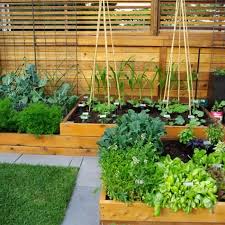How to Prep the Garden for Fall

Clean Up and Remove Debris: Start by removing any dead plants, fallen leaves, and other garden debris. Clearing out the garden helps prevent the buildup of pests and diseases and creates a clean canvas for fall planting.
Trim and Prune: Trim back any dead or overgrown branches from trees, shrubs, and perennials. Prune summer-flowering shrubs as needed to maintain their shape and encourage healthy growth. However, be mindful of late-blooming plants that may still be in flower or have buds.
Harvest Remaining Crops: Harvest any remaining crops from your vegetable garden before the first frost hits. This includes root vegetables, tomatoes, peppers, and other warm-season crops. You can also consider extending the growing season by covering plants with row covers or cold frames.
Amend the Soil: Fall is an excellent time to improve the soil quality in your garden. Add organic matter, such as compost or well-rotted manure, to replenish nutrients and enhance soil structure. Work the amendments into the soil surface with a garden fork or tiller.
Test and Adjust Soil pH: Conduct a soil test to determine the pH levels and nutrient content of your soil. Adjust the pH if necessary by adding lime to raise the pH or sulfur to lower it. This helps ensure optimal conditions for plant growth.
Plant Fall Vegetables and Bulbs: Take advantage of the cooler weather and plant cool-season vegetables such as lettuce, spinach, kale, broccoli, and carrots. Additionally, fall is the perfect time to plant spring-blooming bulbs like tulips, daffodils, and crocuses for a burst of color in the coming year.
Mulch Beds: Apply a layer of organic mulch around trees, shrubs, and perennial beds. Mulching helps retain moisture, suppress weeds, regulate soil temperature, and protect plant roots from freezing temperatures during winter.
Divide and Transplant: Fall is an ideal time to divide and transplant certain perennials. Dig up overcrowded plants and separate them into smaller clumps, replanting them in well-prepared soil. This helps rejuvenate plants and promote healthy growth.
Maintain Lawn Care: Continue regular lawn maintenance practices such as mowing, fertilizing, and watering. Adjust the height of your mower blades to keep the grass slightly longer, which helps protect the roots and retain moisture during the cooler months.
Protect Tender Plants: If you have delicate or cold-sensitive plants, consider covering them with frost blankets, cloths, or other protective materials to shield them from frost or freezing temperatures.
Clean and Store Garden Tools: After completing your garden tasks, clean and properly store your gardening tools. Remove dirt, debris, and rust, and apply a thin layer of oil to prevent corrosion during storage.
By following these steps, you can prepare your garden for fall and ensure a smooth transition into the new season. Taking the time to tidy up, plant appropriate crops, and nurture your plants will help maintain a healthy and vibrant garden throughout autumn and set the stage for future growth.

